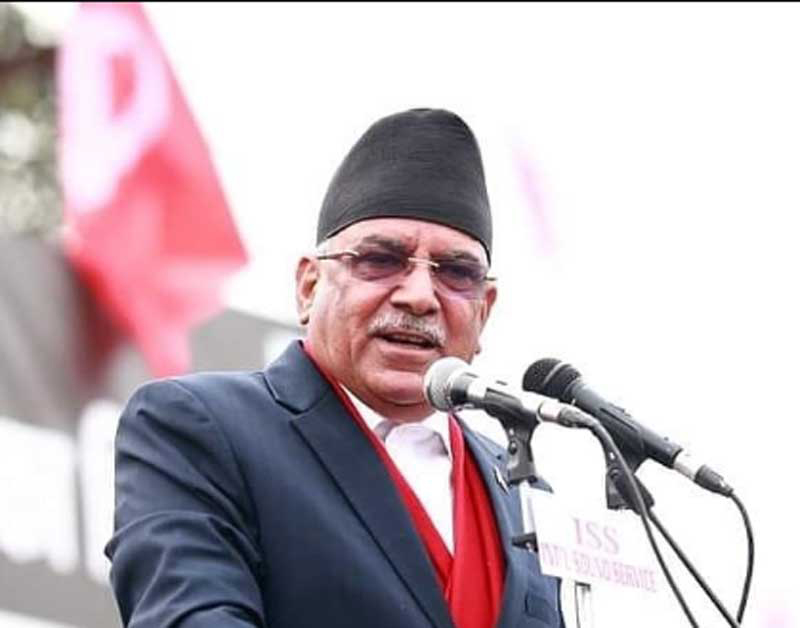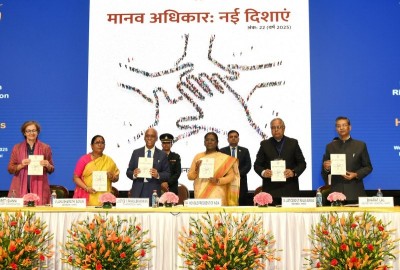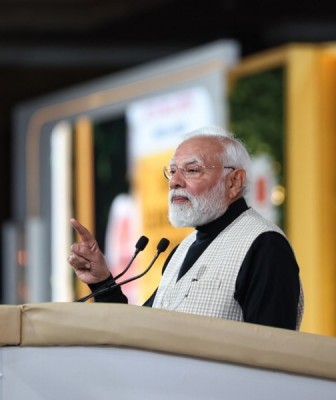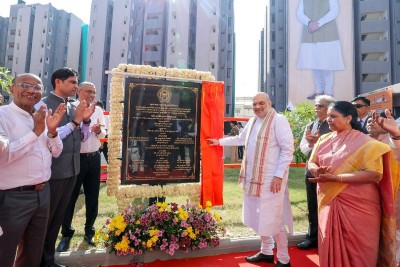 Maoist
Maoist
Maoists: Back at the Helm
In a dramatic, though expected, development in Nepal’s politics, on December 26, 2022, Maoist veteran Pushpa Kamal Dahal aka Prachanda took the oath as Prime Minister of Nepal for the third time. He had earlier served as Prime Minister in 2008-2009 and 2016- 2017.
On November 20, 2022, elections for 165 seats of the House of Representatives (HoR) were held under the first-past-the-post (FPTP) system in a single phase. In accordance with the constitutional arrangement, 110 seats are allocated under the Proportional Representation (PR) system. There are a total of 275 seats in the HoR.
As per the final results submitted by the Election Commission to President Bidya Devi Bhandari, the then Prime Minister Sher Bahadur Deuba-led Nepali Congress (NC) emerged as the single largest party with 89 seats (57 FPTP+ 32 PR), followed by the K.P. Sharma Oli-led Communist Party of Nepal-Unified Marxist Leninist (CPN-UML), 78 seats (44 FPTP+ 34 PR); Prachanda-led Communist Party of Nepal – Maoist Centre (CPN-MC), 32 seats (18 FPTP+ 14 PR); Rashtriya Swatantra Party (RSP), 20 seats (7 FPTP+ 13 PR); Rashtriya Prajatantra Party (RPP), 14 seats (7 FPTP+ 7 PR); Janata Samajbadi Party, Nepal (JSP-N), 12 seats (7 FPTP+ 5 PR); Madhav Kumar Nepal-led Communist Party of Nepal – Unified Socialist (CPN-US), 10 FPTP seats; Janamat Party, six FPTP seats, Loktantrik Samajwadi Party-Nepal (LSP-N), four FPTP seats; Nagarik Unmukti Party, three FPTP seats; and Rashtriya Janmorcha and Nepal Mazdoor Kisan Party, one FPTP seat each. Independents secured five seats.
The then five party Joint Ruling Alliance (JRA) – NC, NCP-MC, CPN-US, LSP-N and Rashtriya Janmorcha – had contested the elections together. The then main opposition party, the CPN-UML had RPP and JSP-N as alliance partners. Though no single party or alliance emerged a clear-cut winner, the JRA could have formed the government, with the help of Independents, as the alliance was in striking distance with 136 seats, just two short of the 138 seats required.
However, the tussle between Prachanda and Deuba over the issue of who would lead the new government intensified. Reports indicate that, while a tacit understanding was reached between the two leaders to lead the government on a rotational basis, the NC in the morning of December 25, rejected Prachanda’s demand to be the Prime Minister in the first half of the term. Later in the day, Prachanda went to meet his friend-turned-rival-turned-friend, another Maoist veteran, Oli, and brokered a deal to form a new government on rotational basis, with Prachanda becoming the Prime Minister first. Prachanda then exited the JRA. On the same day, along with Oli and other new alliance partners, Prachanda went to President Bidya Devi Bhandari, to stake his claim, and was appointed Prime Minister. The had President set December 25, 2022, as the deadline to stake the claim.
Prachanda has the support of 165 lawmakers, including CPN-UML with 78, CPN-MC with 32, RSP with 20, RPP with 14, JSP-N with 12, Janamat Party with six and Nagarik Unmukti Party with three. The President has given him a month’s time to prove his majority in the house.
On November 20, elections for seven Provincial Assemblies were also held. Government formation at the provincial level is still under process. However, the new alliance is expected to form governments in all seven provinces.
It is useful to recall here that, after the previous HoR elections in 2017, the pre-poll Left alliance, including CPN-UML and CPN-MC, had emerged victorious and formed the government. The two parties later merged and formed the Nepal Communist Party. However, the bonhomie between Prachanda and Oli did not last long and the two parted ways. A demerger took place in March 2021, after which Prachanda supported Deuba to become Prime Minister, leaving Oli rudderless. Now it is time for Deuba to be cast away.
Meanwhile, the country remains free of terrorism. The last terror-linked fatality was reported on December 8, 2020, when a teacher was shot dead in the Miklajung Rural Municipality in Morang District of Province No. 1. The teacher, identified as Rajendra Shrestha, was killed by Netra Bikram Chand-led Communist Party of Nepal-Maoist (CPN-Maoist-Chand) cadres. There were 13 fatalities in 2019 (three civilians, two Security Force personnel and eight extremists), all linked to CPN-Maoist-Chand. Violence had surged in 2019 after a lull of almost six years, between 2013 and 2018, during which Nepal recorded just two fatalities (both civilians, in 2013). After facing immense pressure from the Security Forces, the CPN-Maoist-Chand reached a three-point agreement with the Government on March 4, 2021. The agreement stated, inter alia:
the CPN-Maoist-Chand will seek to address all its political issues through dialogue,
the CPN-Maoist-Chand will carry out all its political activities in a peaceful manner, and
the Nepal Government will lift the ban it had imposed on the party's activities, free all cadres from jail and withdraw court cases against them
No other Maoist insurgent group is violently active. The insurgent groups in Terai have also become dormant.
Concerns, however, persist. The Chand group has constantly been accusing the Government of not implementing the 3-point agreement in toto, as its cadres are still in jail. In a demonstration of its grievances, the Chand group boycotted the recent elections, with its spokesperson Khadga Bahadur Bishwokarma warning,
Our party has decided to totally disregard the November 20 federal and provincial polls to be conducted by the capitalist government. We have decided to give an appropriate response if the state suppresses our party's publicity programmes.
The party cadres have subsequently been found to be involved in several incidents of explosion.
Inputs, however, indicate that Pakistan-backed Islamist fundamentalist groups have increased their activities in the country, particularly along the India-Nepal border.
Even though the Maoists are back at the helm again, political stability remains at risk. While the old rivalry and distrust between Prachanda and Oli could flare up again at any time, the tussle between new alliance partners cannot be ruled out, given the deep ideological divides. Thus, while the CPN-UML and CPN-MC are Leftist parties, the RPP is a right-wing monarchist group. It is to be noted that the longevity of the JRA was always under threat as it was an opportunistic alliance between NC and Maoists who were bitter rivals during the Nepali civil war, and remained so for much of the time after.
The insurgency is very much in the past in Nepal, but political instability and friction, at least occasionally spilling over into violence, is an ongoing reality. As with much of South Asia, there is little assurance that this will not escalate at any point into wider disorders, with dormant insurgent formations once again finding the opportunity to reassert themselves. The political classes have demonstrated little maturity in their scramble for power, with at least some elements only recently and provisionally distancing themselves from the option of armed insurrection. Crucially, however, the election process appears have to taken hold on both the people and the leadership, with the second successful national election passing quite peacefully, giving some hope that Nepal’s fractious will not translate into armed violence in the foreseeable future.
Support Our Journalism
We cannot do without you.. your contribution supports unbiased journalism
IBNS is not driven by any ism- not wokeism, not racism, not skewed secularism, not hyper right-wing or left liberal ideals, nor by any hardline religious beliefs or hyper nationalism. We want to serve you good old objective news, as they are. We do not judge or preach. We let people decide for themselves. We only try to present factual and well-sourced news.







